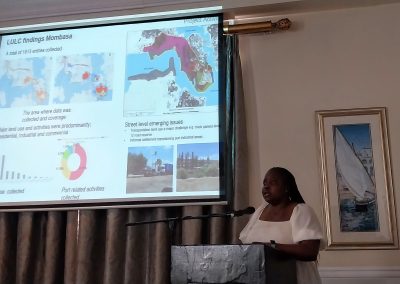Cities on the coast
Coastal cities worldwide are mainly megacities with burgeoning populations; however, they face many challenges. For instance, there is significant traffic congestion and an inadequate energy supply.
Secondly, these cities often struggle with a lack of essential services and the prevalence of informal dwellings. In addition, poor management of natural hazards and environmental degradation present serious threats. Climate change exacerbates these issues, leading to poor governance and urban poverty. Consequently, the informal economy thrives in these conditions, and unplanned development further complicates the situation.
Role of Public Participation and Co-production
Public participation and co-production are essential in developing coastal management plans and can have numerous benefits, such as augmenting expert information with local knowledge and building trust. To attract talent and investment, cities must be sustainable, citizen-centric, economically vibrant, accessible, resilient, well-governed, and responsive. A Well-governed coastal city optimally utilises coastal resources such as mangroves, effectively realising its development’s short—and long-term agenda while achieving greater transparency in public decision-making and establishing institutional accountability.
Future coastal cities are expected to be sustainable by demonstrating balanced social and economic development accomplishments, environmental management, and effective urban governance. **In particular**, the mini-symposium at Nelson Mandela Bay aimed to explore how coastal cities can effectively offer the ecological, physical, mental, and social well-being of individuals and society. **This exploration encompasses** many factors, such as life satisfaction, physical health, psychological state, level of independence, education, wealth, religious beliefs, local services and infrastructure, employment, social relationships, and cultural perspectives. **Consequently**, these dimensions are essential, as stated in SDG 11 on Sustainable Cities and Communities.
Key Points of our presentations
Our presentations and discussions determined how and why the cities should be accessible, including all sections of society, so that people can live independently and participate fully in all aspects of life. To ensure that people with unique abilities and the vulnerable section of society have equal access to all services. In the distant future, urban infrastructure and services will be a function of how technology and business models evolve. Such a city enables all stakeholders to use data collected by digital infrastructure to spot patterns, identify problems and make real-time decisions.
Integrating innovative technologies and community-driven initiatives will pave the way for a more inclusive urban landscape where every voice is heard and valued. By fostering collaboration between local governments, businesses, and citizens, we can create vibrant coastal cities that thrive economically and enhance the quality of life for all residents. Embracing a holistic approach to urban planning will ensure that our coastal towns are not only resilient to the challenges of climate change but also serve as beacons of sustainability and social equity for generations to come.





